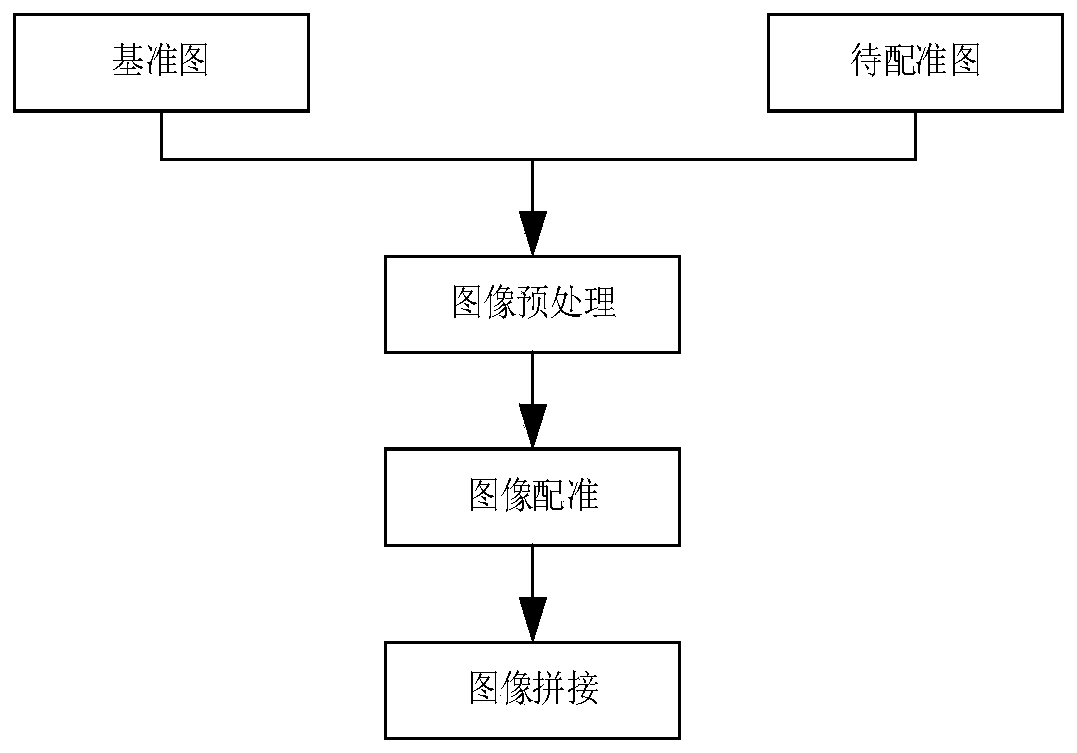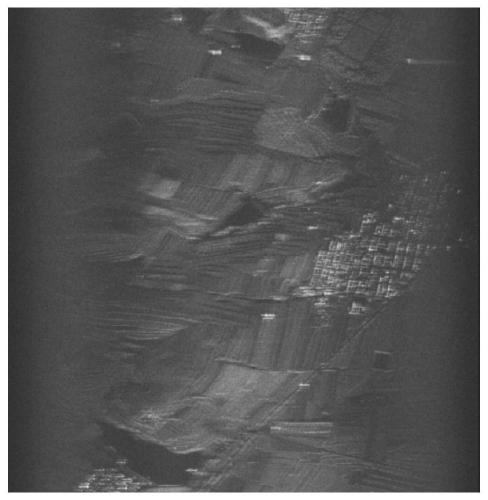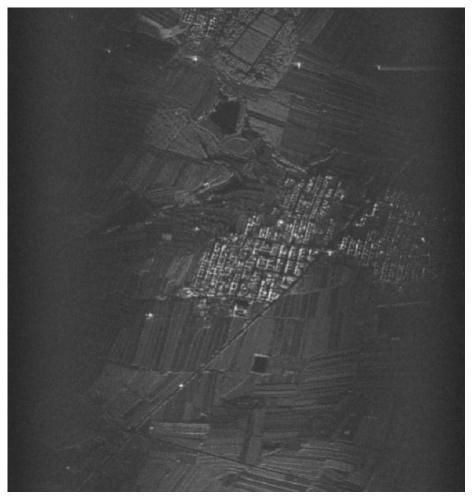SAR image splicing method based on sub-block registration
A technology for image stitching and images to be registered, which is applied in image data processing, graphics and image conversion, instruments, etc. It can solve the problems of gray scale difference, SAR image signal processing error, and the inability to use direct stitching, etc., to achieve accurate stitching, Stitching is simple and efficient
- Summary
- Abstract
- Description
- Claims
- Application Information
AI Technical Summary
Problems solved by technology
Method used
Image
Examples
Embodiment Construction
[0013] The technical solution of the present invention will be specifically described below in conjunction with the accompanying drawings.
[0014] The basic idea of image stitching is that if two images with the same content have differences in acquisition time, viewpoint, sensor type, etc., in order to eliminate the differences, image registration technology needs to be used.
[0015] Image registration can be understood as that there is a certain mapping relationship between the pixel coordinates of the image and the pixel grayscale, and a reference image is set as I 1 (x 1 ,y 1 ),like image 3 As shown, its image to be registered is I 2 (x 2 ,y 2 ),like Figure 4 As shown, then the mapping relationship between the two images can be considered as I 2 (x 2 ,y 2 )=g(f(I 1 (x 1 ,y 1 ))), where f(x,y) is a two-dimensional coordinate mapping function, g(t) is a one-dimensional grayscale mapping function, and the mapping relationship between the reference image and ...
PUM
 Login to View More
Login to View More Abstract
Description
Claims
Application Information
 Login to View More
Login to View More - Generate Ideas
- Intellectual Property
- Life Sciences
- Materials
- Tech Scout
- Unparalleled Data Quality
- Higher Quality Content
- 60% Fewer Hallucinations
Browse by: Latest US Patents, China's latest patents, Technical Efficacy Thesaurus, Application Domain, Technology Topic, Popular Technical Reports.
© 2025 PatSnap. All rights reserved.Legal|Privacy policy|Modern Slavery Act Transparency Statement|Sitemap|About US| Contact US: help@patsnap.com



